
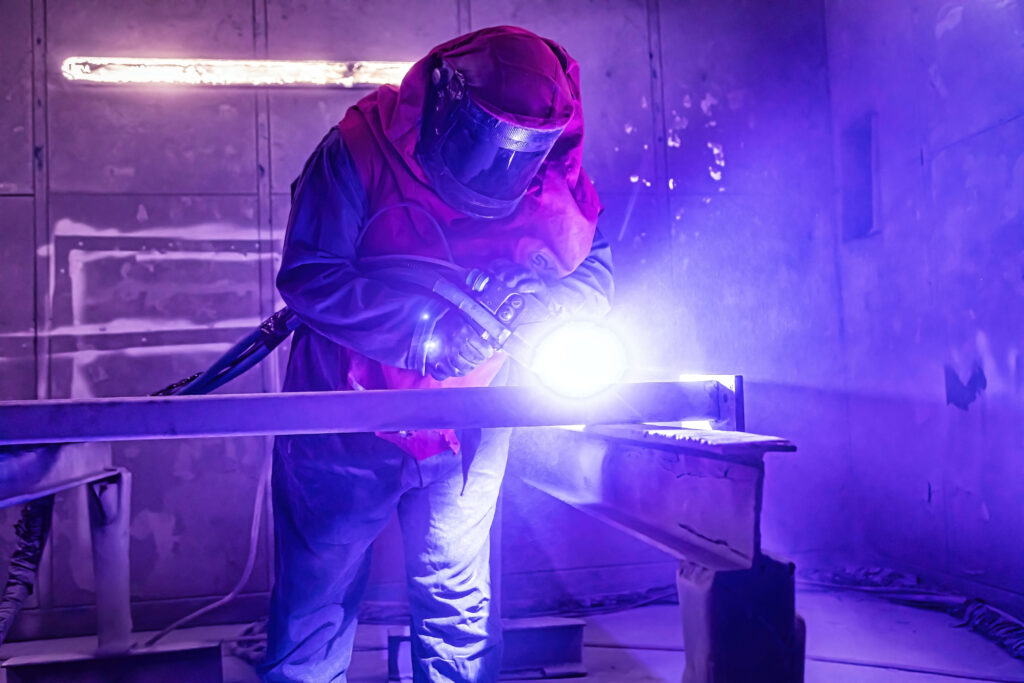
Hot zinc spray being applied by a trained operator
Hot Zinc Spray (HZS) also known as arc spray is a way of galvanising metal with a zinc coating by using a gun to apply the required thickness in order to make the metal anti corrosive. The process of galvanising has been around for over 150 years and was named after the Italian scientist Luigi Galvani. Hot zinc spray is thermal spraying of molten zinc to cover a surface and give it anti corrosion protection.
Traditionally items that need protecting from the elements would be hot dip galvanised, by submerging the item in a bath of molten zinc. But in recent years since its introduction in the 1930’s the hot zinc spray process has become popular with powder coaters as it leaves a better finish than traditional hot dipped galvanizing.
The arc spray process works by firing two zinc wires at each other, one is positive and the other negative, this forms the electric arc. Compressed air or inert gas is then used to propel the atomised molten zinc onto the item you are coating. This thermal spray process is sometimes also called twin arc spraying or hot zinc spray coating. One of the market leading manufactures of Arc Spray Guns is Metallisation.
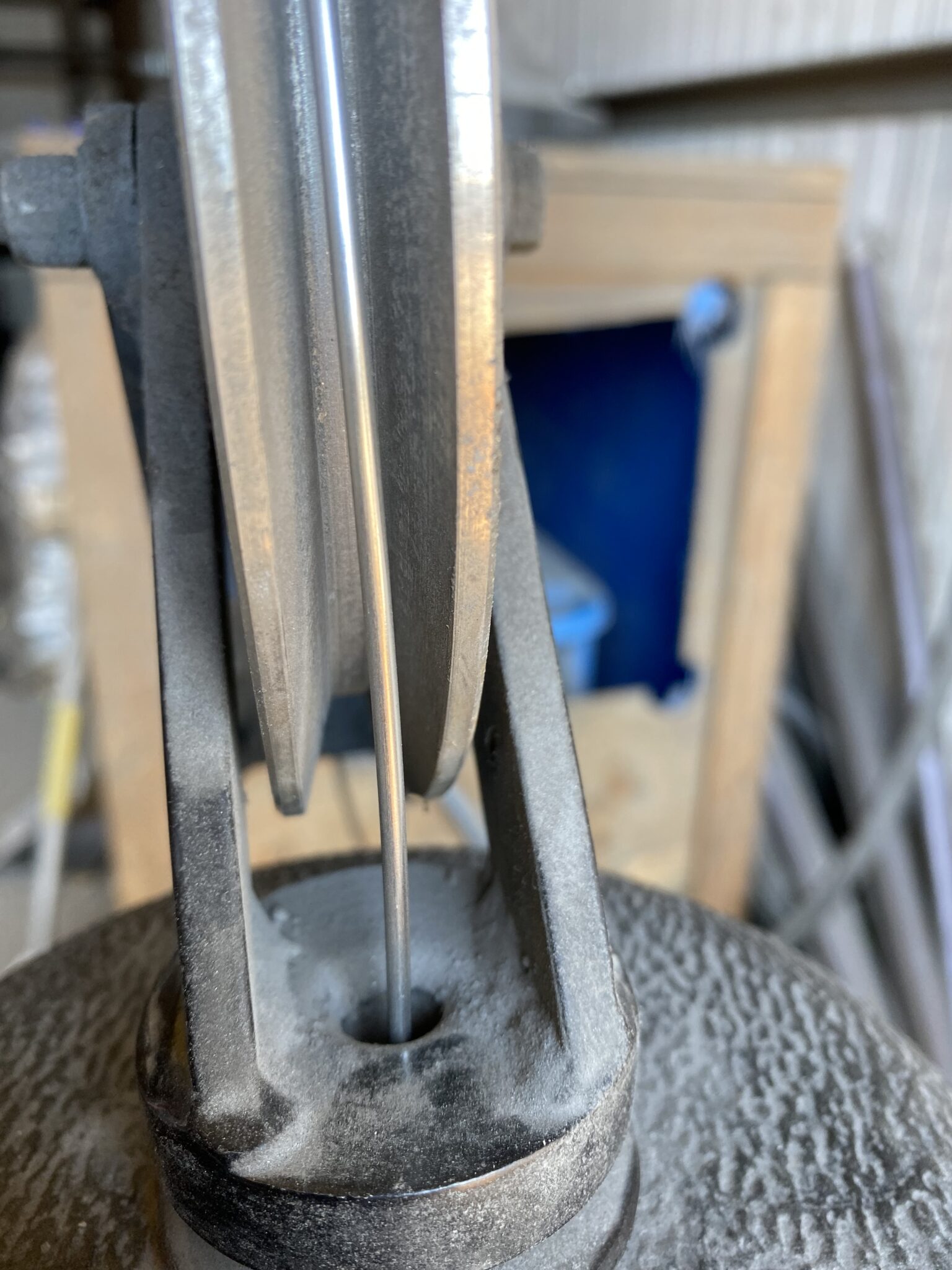
One of the zinc wires coils before it reaches the gun
The benefits of Hot Zinc Spray
There are many benefits to Hot Zinc Spray
- HZS can be applied with accuracy, in the hands of a skilled operator, the thickness of the application and the coverage can be carefully managed.
- For the powder coating industry, Hot Zinc Spray requires no fettling, just a little rub down and the item is ready for the next coat. (See photo below)
- You can use it on large or awkward items that do not fit in the traditional galvanise bath
- There is no risk of warping due to excessive heat
- It can be used on or off-site
- It is better for the environment
- No need for holes to be drilled in hollow sections.
The disadvantages of hot zinc spray
The main drawback of hot zinc spray is that it is hard or near impossible to cover any long hollow tube or area where the operator cannot get the spray gun in.
In this case, it would be advised, if possible, to use hot dip galvanizing the item so that the molten zinc can run through the tube or enclosed area to give full coverage and
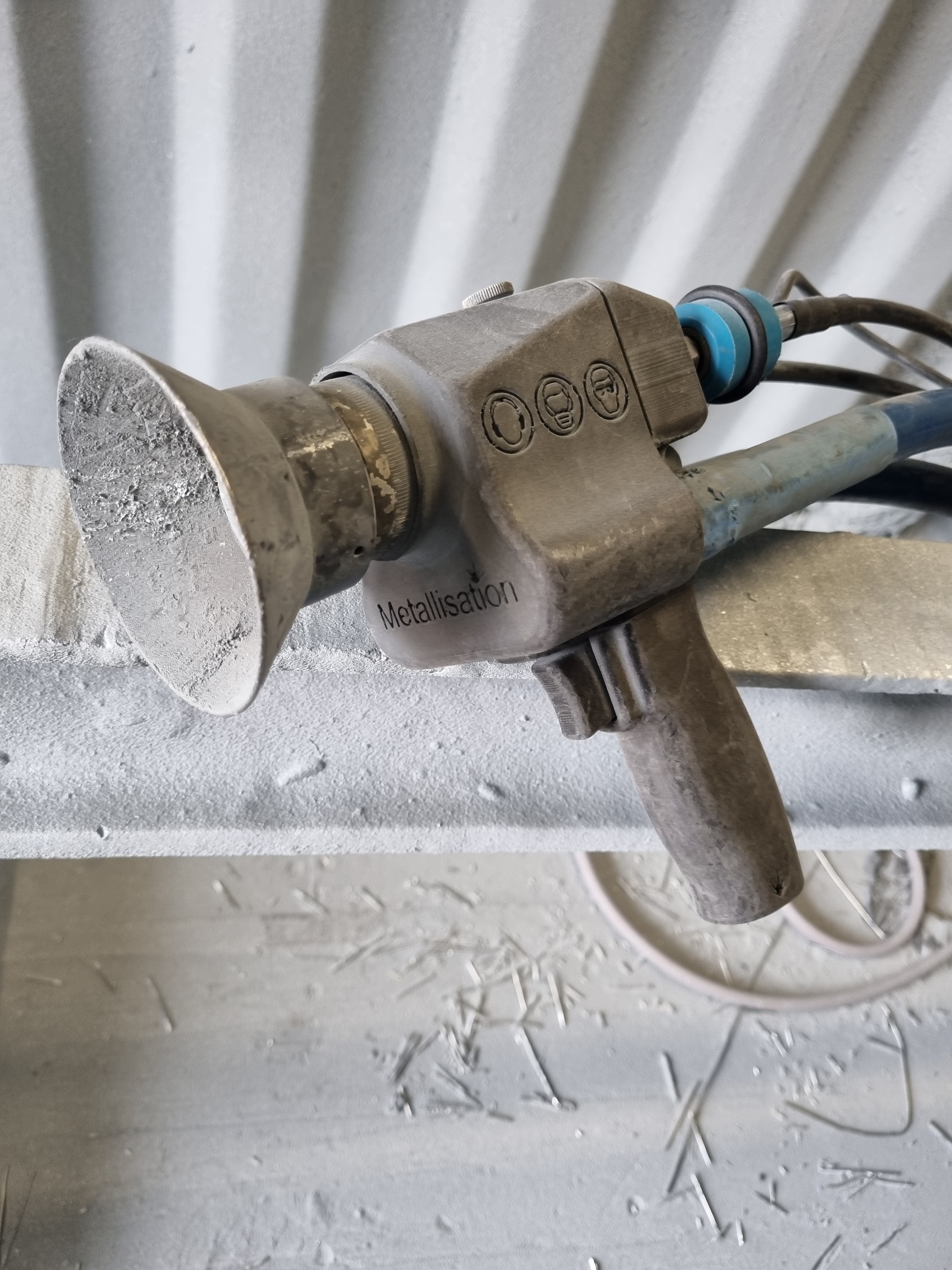
This is the gun where the positive and negative wires are collided to form the electric arc of molten zinc
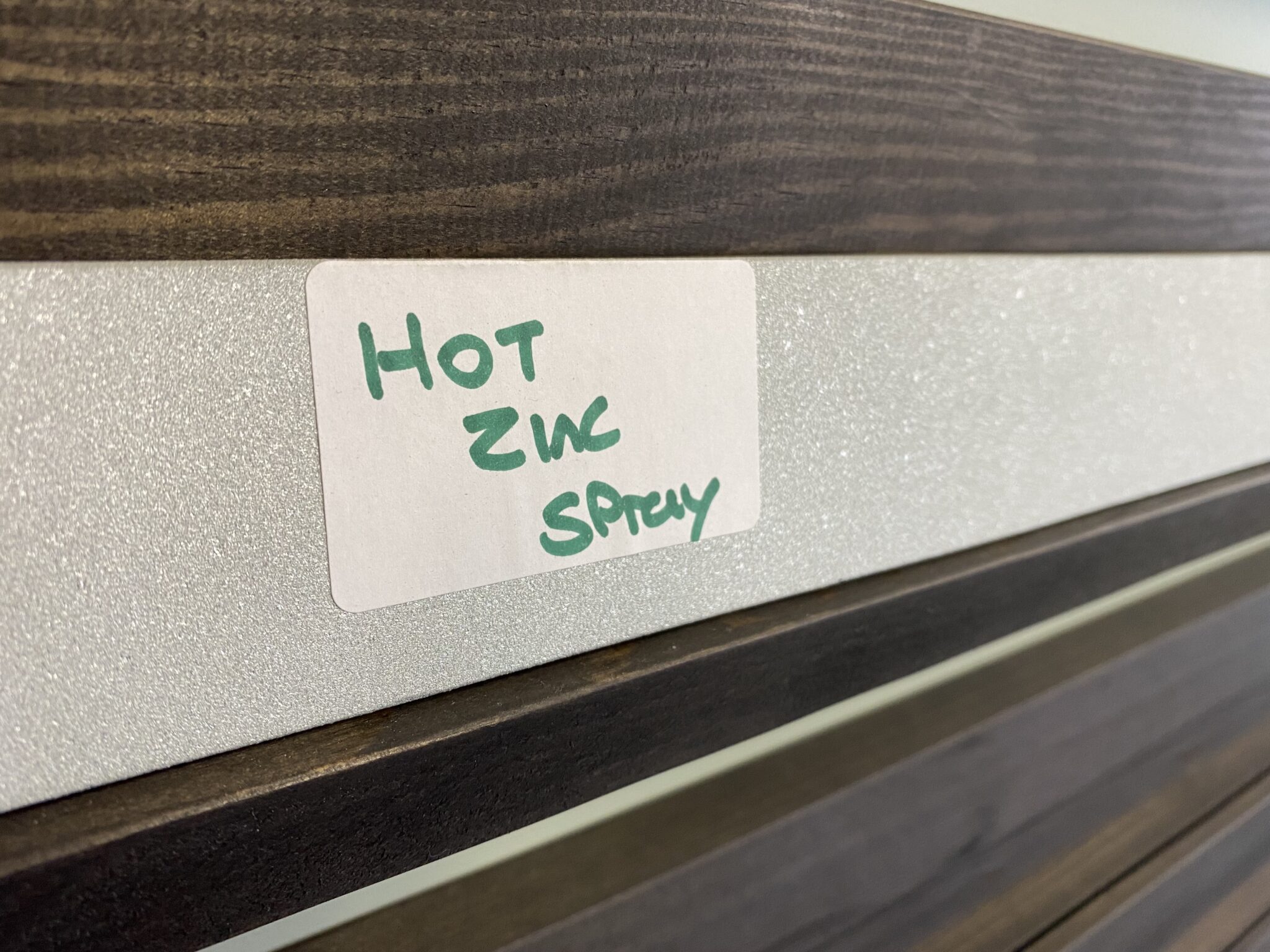
This is how smooth HZS is and without fettling, is ready for its next coat
Is zinc heat resistant?
The melting point of zinc as an element is 780 degrees F or 480-degree centigrade, but when it’s galvanised, the zinc reacts with the steel to form a zinc-iron alloy, and this has a higher melting point of 620 degrees c.
Zinc is unusual as a metal in the fact that it vaporises or turns to gas at 950 degrees c.
Galvanised items can be tolerant of heat and cold, tests have proven that galvanised items tolerate extreme cold well, but heat is not advised for prolonged periods above 200 degrees c

A happy operator emerging from his protective air fed helmet
Is zinc toxic when heated?
Hot Zinc thermal Spray should only be carried out by a professional and using the correct PPE, the vapour or gas generated when zinc spraying can be harmful on prolonged exposure. Its referred to in the trade as zinc flu. In high concentrations, exposure to inhaling has a narcotic effect and may cause headache, fatigue, dizziness, and nausea.
When it comes to the environment, the thermal spray contains a substance which is harmful to aquatic organisms, and which may cause long-term adverse effects in the aquatic environment. So, disposing of any excess Zinc in the right manner is very important.
Hot Zinc Spray (HZS) Versus Hot Dip Galvanizing (HDG)
What is better Hot zinc thermal spray or Hot dip galvanising? this is easy to answer, it all depends on the use of the item and its construction.
So, if your item has a lot of hollow sections or enclosed areas that are not accessible for the spray gun, then traditional hot dip galvanizing, HDG, in the bath of liquid zinc is the right way to go as it coats the material inside and out. However, it is important to point out that heat distortion can be an issue as the molten zinc needs to be kept hot, items are dipped in at 1040-1165°F (560-630°C) this can cause warping and sometimes welding to become unstable or even fail.
The alternative hot zinc solution is hot zinc thermal spray, HZS, also called arc thermal spraying. At NSP we use this to give items an anti-corrosive coating before we apply our powder coating or wet spray topcoats. Hot Zinc Coating with the spray gun has many advantages as listed below, but we feel it gives superior coverage and does not need to be fettled only a light rub down to make smooth. Thermal spray in our opinion is quicker, more reliable, and cost-effective in most cases over the dip galvanizing process
One of the big drawbacks of hot-dip zinc baths is that it can leave an uneven finish and dross, (as in this photo) that stops it from having a paint coating applied directly. Fettling and sometimes extreme fettling needs to take place to get a smooth substrate, this can remove the zinc galvanised finish and weaken the anti-corrosion layer.
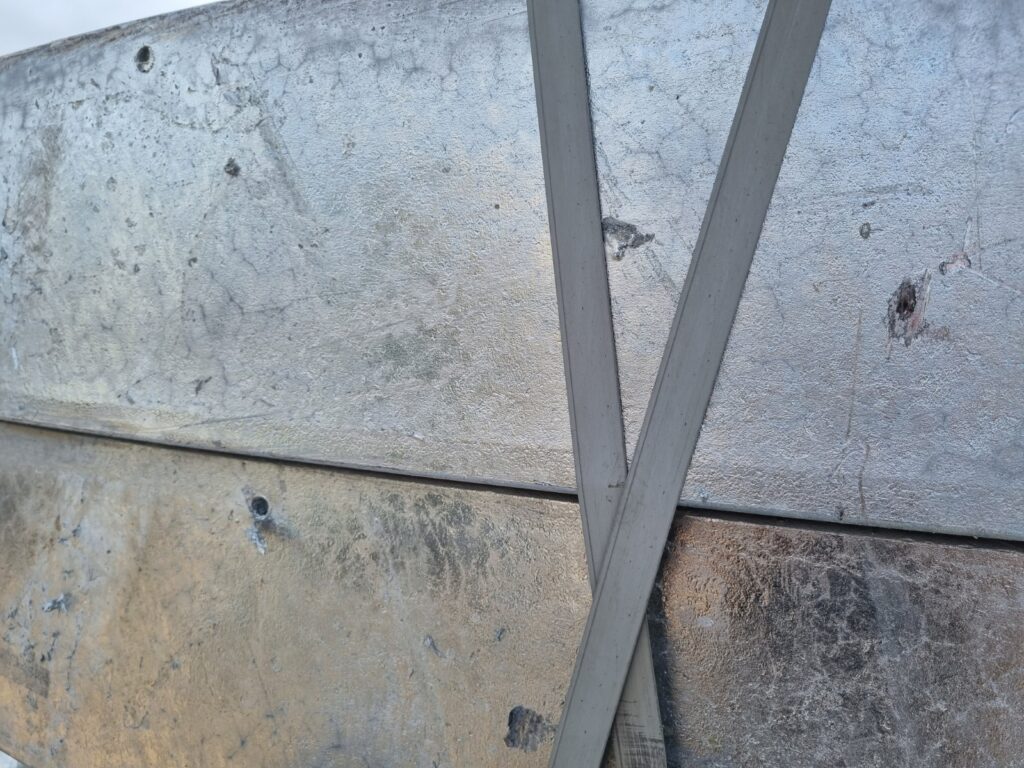
An example of how pitted and rough hit dipped galvanising can be
Facts about Hot Dip Galvanising
- It can only be carried out off-site
- You might be restricted by the size of the bath v’s the item
- Items can be too small to dip
- Because the zinc is molten, the bath is very hot, and it can cause distortion of the base metal
- Again, heat can cause welds to expand
- In some instances, can be a lower cost
- Its protection typically last 20-25 year but can last in excess of 50 years
- Because the item is submerged it can fill hollow tubes and hard-to-reach areas
- galvanizing has an abrasion resistance ten times better than organic paint coatings
- Using the dipping process can be quick depending on the coverage thickness required
- Holes need to be made in the item in order to hang it
- The tanks need to be kept molten using more fuel/energy when not in use
- If items are to be painted after galvanizing, they will need to be fettled
Facts about Hot Zinc Spray
- It can be used in a factory or out on site
- Not limited to the size, large or small items can be coated
- Low heat input means, less risk of thermal distortion
- Lower risk of thermal metallurgical degradation
- The process is not limited to zinc
- The thickness can be varied across the item if needs be
- Sealed tubes can be coated without the risk of explosion
- No effluent disposal problems
- It can be used to spot and treat metal
- Fuel / Energy is only used during the application process
- If items are being painted, they will need no fettling
- No drip marks or build ups
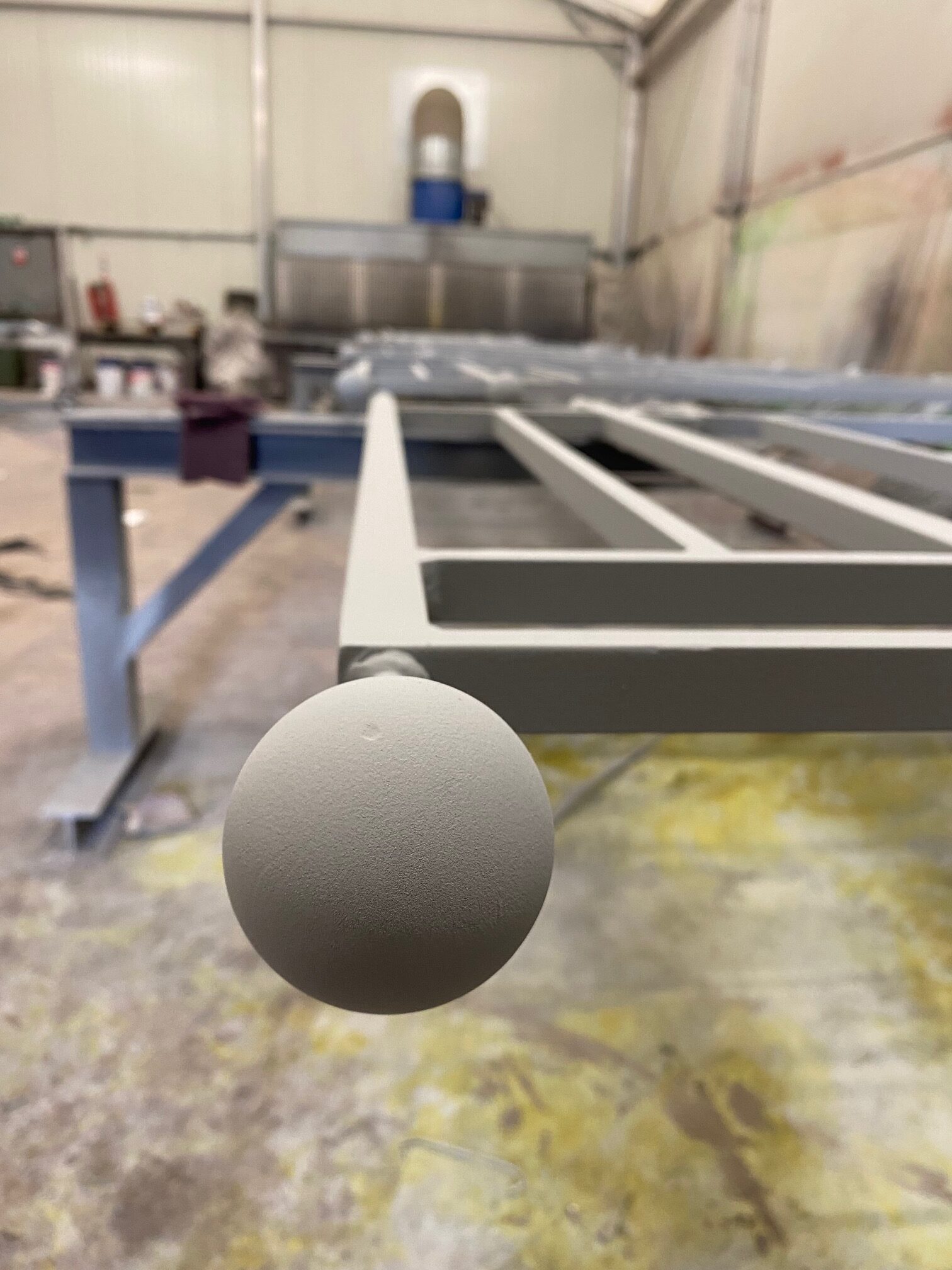
This railing is ready for its topcoat

